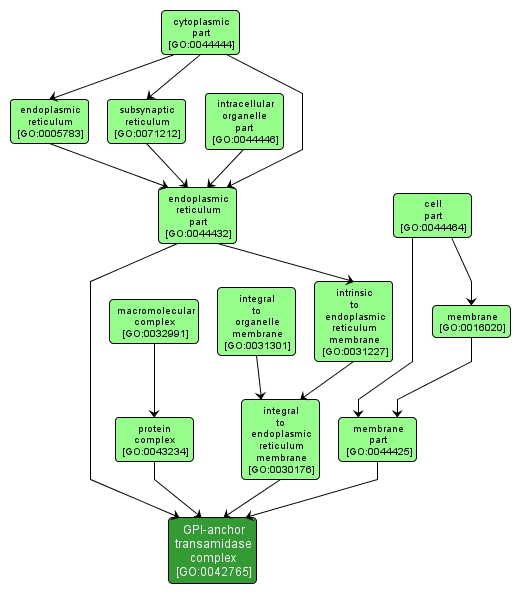| Desc: |
An enzyme complex which in humans and yeast consists of at least five proteins; for example, the complex contains GAA1, GPI8, PIG-S, PIG-U, and PIG-T in human, and Gaa1p, Gab1p, Gpi8p, Gpi16p, and Gpi17p in yeast. Catalyzes the posttranslational attachment of the carboxyl-terminus of a precursor protein to a GPI-anchor. |














